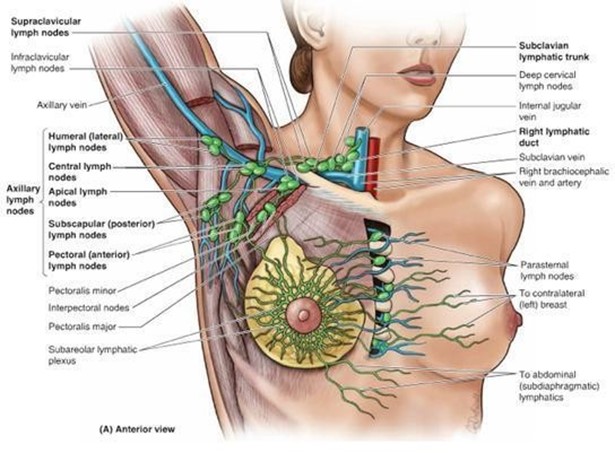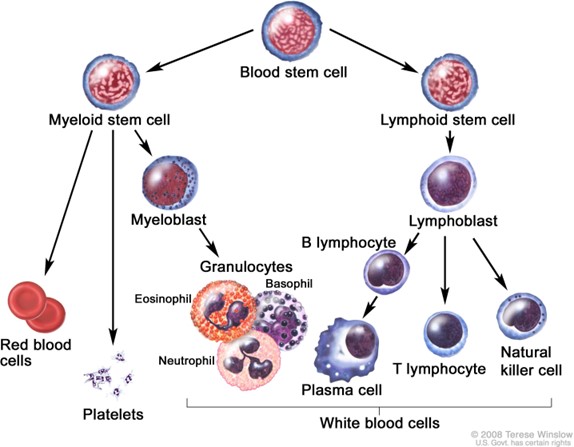The lymph nodes of the axillary region receive lymph mainly from the:
Upper limb and mammary gland.
Abdominal viscera.
Scalp and face.
Thoracic viscera.
The Correct Answer is A
The lymph nodes of the axillary region receive lymph mainly from the upper limb and mammary gland.
This is because the axillary lymph nodes are located in the armpit area and drain the lymph vessels from the lateral quadrants of the breast and the arm.

Choice B is wrong because the abdominal viscera are drained by the celiac, superior mesenteric, and inferior mesenteric lymph nodes.
Choice C is wrong because the scalp and face are drained by the cervical lymph nodes.
Choice D is wrong because the thoracic viscera are drained by the bronchopulmonary, tracheobronchial, parasternal, and posterior mediastinal lymph nodes.
Nursing Test Bank
Naxlex Comprehensive Predictor Exams
Related Questions
Correct Answer is A
Explanation
The cell is the basic unit of structure and function of all known living organisms.
The cell theory states that all living things are composed of cells and that new cells are made from preexisting cells.
Cells are organized from atoms, molecules, and macromolecules, and contain organelles that perform specialized functions.
Choice B is wrong because a molecule is a group of atoms bonded together, not a living unit.
Choice C is wrong because an atom is the smallest unit of matter, not a living unit.
Choice D is wrong because a macromolecule is a large molecule composed of smaller molecules, not a living unit.
Correct Answer is B
Explanation

B cells are a type of lymphocyte that originate from the bone marrow and are involved in humoral immunity.
When they encounter a foreign substance (antigen), they differentiate into plasma cells, which secrete antibodies.
Antibodies are proteins that bind to the antigen and neutralize it.
Choice A is wrong because megakaryocytes are large cells that produce platelets, not antibodies.
Choice C is wrong because antibodies are not cells, but products of plasma cells.
Choice D is wrong because T cells are another type of lymphocyte that originate from the thymus and are involved in cell-mediated immunity, not antibody production.
Whether you are a student looking to ace your exams or a practicing nurse seeking to enhance your expertise , our nursing education contents will empower you with the confidence and competence to make a difference in the lives of patients and become a respected leader in the healthcare field.
Visit Naxlex, invest in your future and unlock endless possibilities with our unparalleled nursing education contents today
Report Wrong Answer on the Current Question
Do you disagree with the answer? If yes, what is your expected answer? Explain.
Kindly be descriptive with the issue you are facing.
